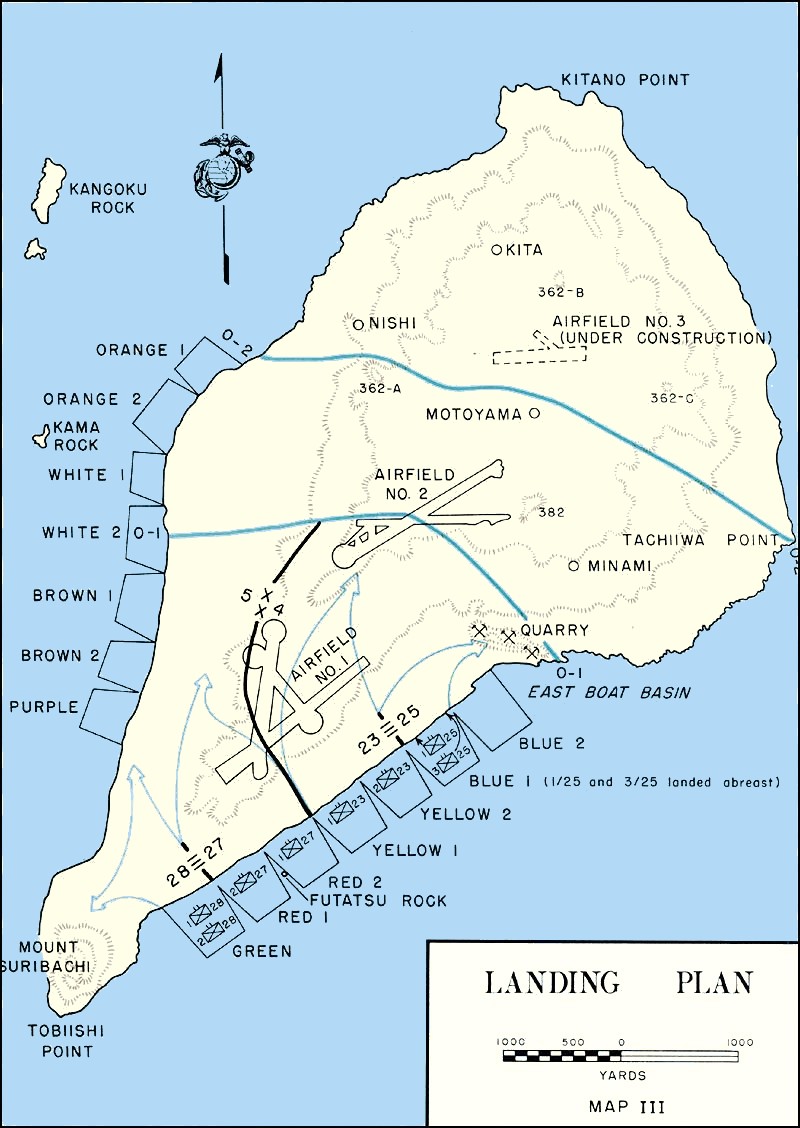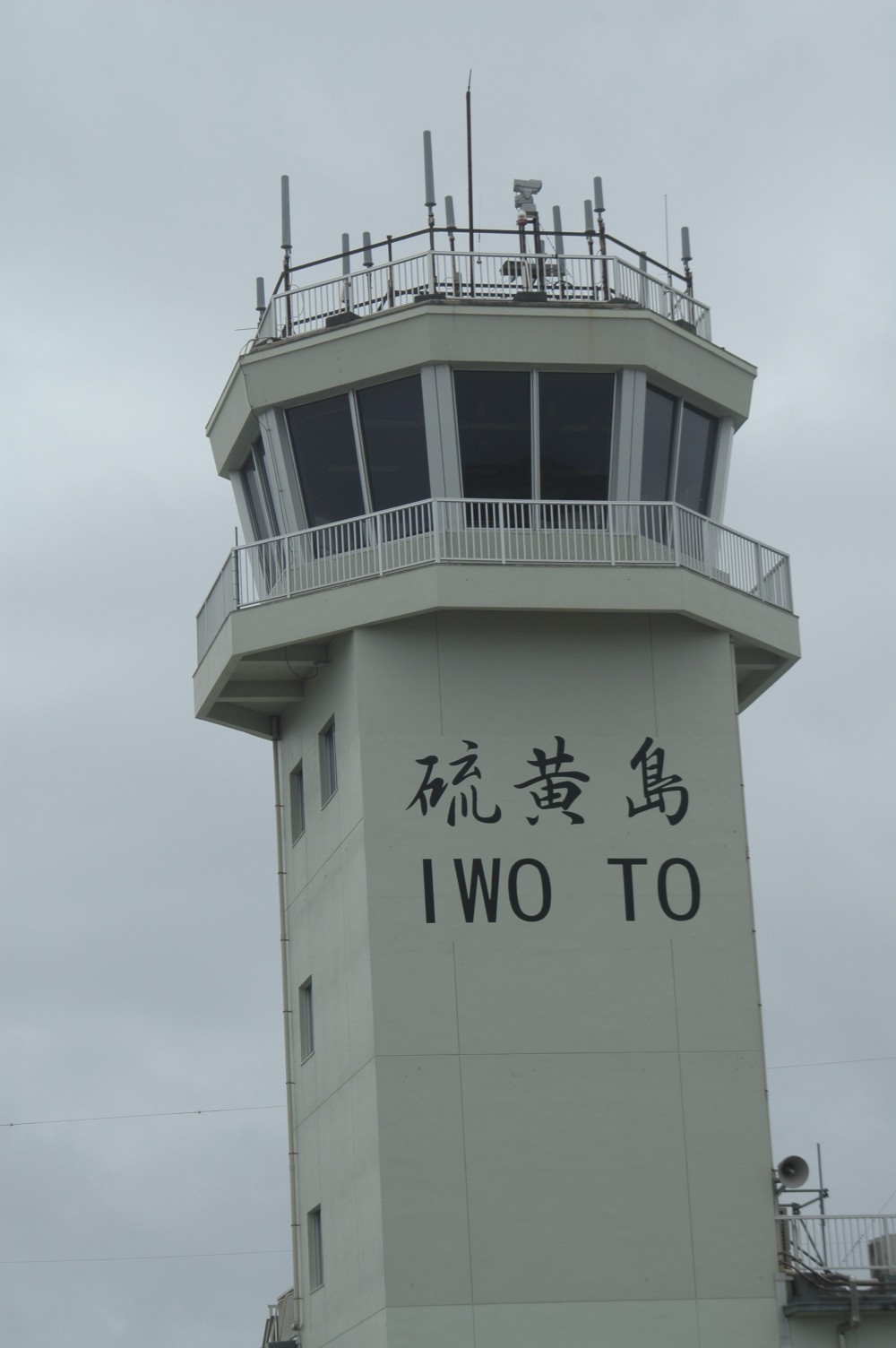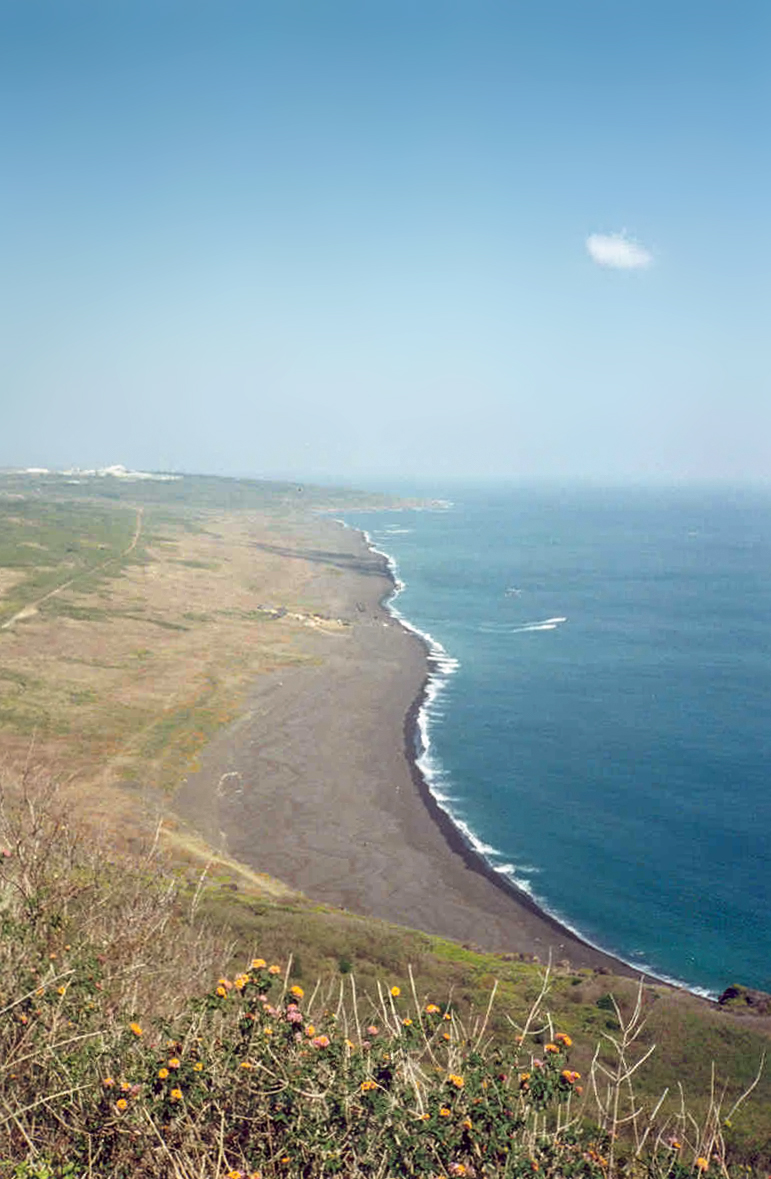|
28th Marine Regiment (United States)
The 28th Marine Regiment (28th Marines) is an infantry regiment of the United States Marine Corps. The regiment (inactive since the Vietnam War) which is part of the 5th Marine Division, fought in the Battle of Iwo Jima during World War II. Six Marines of the 2nd Battalion, 28th Marines were featured in the historical photo by Joe Rosenthal of the U.S. flag raising on top of Mount Suribachi. Office of U.S. Marine Corps Communication, 23 June 2016 Subordinate units The regiment comprised three |
5th Marine Division (United States)
The 5th Marine Division was a United States Marine Corps ground combat division which was activated on 11 November 1943 (officially activated on 21 January 1944) at Camp Pendleton, California during World War II. The 5th Division saw its first combat action during the Battle of Iwo Jima in 1945 where it sustained the highest number of casualties of the three Marine divisions of the V Amphibious Corps (invasion force). The 5th Division was to be part of the planned invasion of the Japan homeland before Japan surrendered. Assault troops of the 5th Division were included in the Presidential Unit Citation awarded to the V Amphibious Corps for extraordinary heroism on Iwo Jima from 19 to 28 February 1945. The 5th Division was deactivated on 5 February 1946. The 5th Division was ordered to be reactivated on 1 March 1966 at Camp Pendleton, California, during the Vietnam War. The division, beginning with the reactivation of Regimental Landing Team 26 (RLT 26), was expected to be full ... [...More Info...] [...Related Items...] OR: [Wikipedia] [Google] [Baidu] |
Marine Raiders
The Marine Raiders are special operations forces originally established by the United States Marine Corps during World War II to conduct amphibious light infantry warfare. " Edson's" Raiders of 1st Marine Raider Battalion and " Carlson's" Raiders of 2nd Marine Raider Battalion are said to have been the first United States special operations forces to form and see combat during World War II. Despite the original intent for Raiders to serve in a special operations capacity, most combat operations saw the Raiders employed as conventional infantry. This, combined with the resentment within the rest of the Marine Corps that the Raiders were an "elite force within an elite force", led to the original Raider units being disbanded. Four Raider battalions served operationally but all were disbanded on 8 January 1944, when the Marine Corps made the doctrinal decision that the Raiders had outlived their original mission. The changing nature of the war in the Pacific, with many large- ... [...More Info...] [...Related Items...] OR: [Wikipedia] [Google] [Baidu] |
Tinian
Tinian ( or ; old Japanese name: 天仁安島, ''Tenian-shima'') is one of the three principal islands of the Commonwealth of the Northern Mariana Islands. Together with uninhabited neighboring Aguiguan, it forms Tinian Municipality, one of the four constituent municipalities of the Northern Marianas. Tinian's largest village is San Jose. History Spanish colonial period Tinian, together with Saipan, was possibly first sighted by Europeans of the Spanish expedition of Ferdinand Magellan, when it made landfall in the southern Marianas on 6 March 1521. It was likely sighted next by Gonzalo Gómez de Espinosa in 1522 on board the Spanish ship ''Trinidad'', in an attempt to reach Panama after the death of Magellan. This would have happened after the sighting of the Maug Islands in between the end of August and end of September. Gonzalo de Vigo deserted in the Maugs from the ''Trinidad'' and in the next four years, living with the Chamorros, visited thirteen main islands in the ... [...More Info...] [...Related Items...] OR: [Wikipedia] [Google] [Baidu] |
Eniwetok
Enewetak Atoll (; also spelled Eniwetok Atoll or sometimes Eniewetok; mh, Ānewetak, , or , ; known to the Japanese as Brown Atoll or Brown Island; ja, ブラウン環礁) is a large coral atoll of 40 islands in the Pacific Ocean and with its 664 people (as of 2011) forms a legislative district of the Ralik Chain of the Marshall Islands. With a land area total less than , it is no higher than and surrounds a deep central lagoon, in circumference. It is the second-westernmost atoll of the Ralik Chain and is west from Bikini Atoll. It was held by the Japanese from 1914 until its capture by the United States in February 1944, during World War II, then became Naval Base Eniwetok. Nuclear testing by the US totaling the equivalent of over 30 megatons of TNT took place during the Cold War; in 1977–1980, a concrete dome (the Runit Dome) was built on Runit Island to deposit radioactive soil and debris. The Runit Dome is deteriorating and could be breached by a typhoon, though ... [...More Info...] [...Related Items...] OR: [Wikipedia] [Google] [Baidu] |
Pearl Harbor
Pearl Harbor is an American lagoon harbor on the island of Oahu, Hawaii, west of Honolulu. It was often visited by the Naval fleet of the United States, before it was acquired from the Hawaiian Kingdom by the U.S. with the signing of the Reciprocity Treaty of 1875. Much of the harbor and surrounding lands are now a United States Navy deep-water naval base. It is also the headquarters of the United States Pacific Fleet. The U.S. government first obtained exclusive use of the inlet and the right to maintain a repair and coaling station for ships here in 1887. The surprise attack by the Imperial Japanese Navy on December 7, 1941, led the United States to declare war on the Empire of Japan, making the attack on Pearl Harbor the immediate cause of the United States' entry into World War II. History Pearl Harbor was originally an extensive shallow embayment called ''Wai Momi'' (meaning, “Waters of Pearl”) or ''Puuloa'' (meaning, “long hill”) by the Hawaiians. Puuloa was r ... [...More Info...] [...Related Items...] OR: [Wikipedia] [Google] [Baidu] |
V Amphibious Corps
The V Amphibious Corps (VAC) was a formation of the United States Marine Corps which was composed of the 3rd, 4th and 5th Marine Divisions in World War II. The three divisions were the amphibious landing force for the United States Fifth Fleet with two goals, removal of Japanese forces from islands so U.S. Seabees could build advance bases to project US power. In doing this VAC was notably involved in the battles for Tarawa, Saipan, and Iwo Jima. V Amphibious Corps was commanded by General Holland 'Howlin Mad' Smith followed by General Harry Schmidt. History The V Amphibious Corps (formerly Amphibious Corps, Pacific Fleet; ACPF) was formed on 25 August 1943 at Camp Elliot, California. In September 1943, it moved to Pearl Harbor, Hawaii. Structure The structure of a United States Marine Corps' amphibious corps by 1945, was broken down into four major subordinate commands with each of them having numerous sub-elements: * The first major element of the Corps was three rein ... [...More Info...] [...Related Items...] OR: [Wikipedia] [Google] [Baidu] |
Iwo Jima
Iwo Jima (, also ), known in Japan as , is one of the Japanese Volcano Islands and lies south of the Bonin Islands. Together with other islands, they form the Ogasawara Archipelago. The highest point of Iwo Jima is Mount Suribachi at high. Although south of the metropolis of Tokyo on the mainland, this island of 21 km2 (8 square miles) is administered as part of the Ogasawara Subprefecture of Tokyo. Since July 1944, when all the civilians were forcibly evacuated, the island has had a military-only population. The island was the location of the Battle of Iwo Jima between February 1945 and March 1945. This engagement saw some of the fiercest fighting of the Pacific War, with each side suffering over 20,000 casualties in the battle. The island became globally recognized when Joe Rosenthal, of the Associated Press, published his photograph '' Raising the Flag on Iwo Jima'', taken on Mount Suribachi. The US military occupied Iwo Jima until 1968, when it was returned to ... [...More Info...] [...Related Items...] OR: [Wikipedia] [Google] [Baidu] |
Planning For The Battle Of Iwo Jima
In anticipation of the Battle of Iwo Jima, Lieutenant General Tadamichi Kuribayashi prepared a defense that broke with Japanese military doctrine. Rather than defending the beaches, Kuribayashi devised a defense that maximized enemy attrition. The American plan of attack was made in anticipation of a standard defense. Japanese planning Even before the fall of Saipan in June 1944, Japanese planners knew that Iwo Jima would have to be reinforced significantly if it were to be held for any length of time, and preparations were made to send sizable numbers of men and quantities of materiel to that island. In late May, Lieutenant General Tadamichi Kuribayashi was summoned to the office of the Prime Minister, General Hideki Tōjō, and told that he had been chosen to defend Iwo Jima to the last. Kuribayashi was further apprised of the importance of this assignment when Tojo pointed out that the eyes of the entire nation were focused on the defense of Iwo Jima. Fully aware of the impl ... [...More Info...] [...Related Items...] OR: [Wikipedia] [Google] [Baidu] |
Caroline Islands
The Caroline Islands (or the Carolines) are a widely scattered archipelago of tiny islands in the western Pacific Ocean, to the north of New Guinea. Politically, they are divided between the Federated States of Micronesia (FSM) in the central and eastern parts of the group, and Palau at the extreme western end. Historically, this area was also called ''Nuevas Filipinas'' or New Philippines, because they were part of the Spanish East Indies and were governed from Manila in the Philippines. The Carolines are scattered across a distance of approximately 3,540 kilometers (2,200 miles), from the westernmost island, Tobi (island), Tobi, in Palau, to the easternmost island, Kosrae, a Administrative divisions of the Federated States of Micronesia, state of the FSM. Description The group consists of about 500 small coral islands, east of the Philippines, in the Pacific Ocean. The distance from Yap (one of the larger Caroline islands) to Manila is . Most of the islands are made up of ... [...More Info...] [...Related Items...] OR: [Wikipedia] [Google] [Baidu] |
Iwo Jima - Landing Plan
Iwo or IWO may refer to: People * Iwo Byczewski (born 1948), Polish diplomat * Iwo Dölling (1923–2019), Swedish diplomat * Iwo Gall (1890–1959), Polish theater director, stage designer, and pedagogue * Iwo Kaczmarski (born 2004), Polish footballer * Iwo Lominski (1905–1968), Polish-born microbiologist * Iwo Odrowąż (died 1229), medieval Polish humanist, statesman, and bishop * Iwo Cyprian Pogonowski (1921–2016), Polish-born polymath and inventor * Iwo Zaniewski (born 1956), Polish painter, photographer, director, and artistic director Places * Iwo Islands, another name for the Volcano Islands of Japan, of which Iwo Jima is one ** Iwo Jima, a small island in Japan, site of the Battle of Iwo Jima during World War II * Iwo Kingdom, a traditional state based on the city of Iwo in Osun State, Nigeria ** Iwo, Osun, a city in the Nigerian state of Osun Other uses *IWO, the International Workers Order, a pro-Communist fraternal organization and insurance company Se ... [...More Info...] [...Related Items...] OR: [Wikipedia] [Google] [Baidu] |
Camp Tarawa
Camp Tarawa was a training camp located on Hawaiʻi Island constructed and used by the 2nd Marine Division during World War II. The grounds of the camp were situated between the volcanic peak of Mauna Kea and Kohala mountain. Marines were sent straight from the bloody Battle of Tarawa to the campsite, which they had to build themselves. It was well known for its harsh and dusty conditions by Marines who trained there. After the 2d Marine Division left for Saipan, the 5th Marine Division moved into the base and trained for the Battle of Iwo Jima. The base was closed for good in November 1945. The base was chosen by Marine commanders because the colder climate was beneficial to Marines still suffering with malaria symptoms from the Guadalcanal Campaign, the nearby Parker Ranges were excellent training areas, the leadership knew that the Marines' next fight would be in mountainous terrain and the relative isolation of the camp gave the Marines time to adjust to the people o ... [...More Info...] [...Related Items...] OR: [Wikipedia] [Google] [Baidu] |
Hilo, Hawaii
Hilo () is a census-designated place (CDP) and the largest settlement in Hawaii County, Hawaii, United States, which encompasses the Island of Hawaii. The population was 44,186 according to the 2020 census. It is the fourth-largest settlement in the state of Hawaii and largest settlement in the state outside of Oahu. Hilo is the county seat of the County of Hawaii and is in the District of South Hilo. The city overlooks Hilo Bay and has views of two shield volcanoes, Mauna Loa, an active volcano, and Mauna Kea, a dormant volcano. Mauna Kea is the site of some of the world's most important ground-based astronomical observatories. The Hilo bay-front has been destroyed by tsunamis twice. The majority of human settlement in Hilo stretches from Hilo Bay to Waiākea-Uka, on the flanks of the volcanoes. Hilo is home to the University of Hawaii at Hilo, ʻImiloa Astronomy Center, as well as the Merrie Monarch Festival, a week-long celebration, including three nights of competition, of ... [...More Info...] [...Related Items...] OR: [Wikipedia] [Google] [Baidu] |






